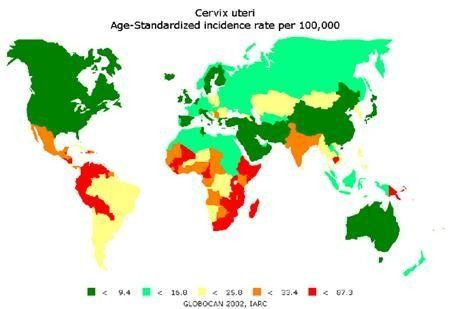New WHO Guide for Cervical Cancer Prevention

Just recently, the World Health Organization (WHO) launched a new comprehensive guide to aid countries in their health programs on cervical cancer control and prevention. It was presented during the World Cancer Leaders' Summit in Melbourne, Australia on Dec 3, 2014. The new guidebook, which is also called 'Pink Book', aims to address social inequities and gender discrimination in creating health programs.
For the past 30 years, cervical cancer incidence rates have decreased in industrialized countries due to constant screening and vaccination campaigns. However, rates in developing countries have increased or remain the same because of inadequate access to health services that cater to women's health
The new guidance focuses on these main points: administering HPV vaccine to young teenage girls, lessening the frequency of HPV tests on women, and promoting the awareness more widely. For the first element, HPV vaccination in 9 to 13 year old girls will be reduced to a 2-dose schedule instead of the existing 3-dose schedule. The change aims to make it easier to conduct the vaccination and to cut on costs, especially in developing countries lacking resources for the immunization.
As for HPV screening for cancer prevention, rescreening schedule has been reduced for those who tested negative. The next screening can be done after 5 years or within 10 years. Again, this would be a significant cost saving measure for various health systems.
The third major element intends to widen the audience being reached for cervical cancer awareness and screening. Instead of focusing on those aged 29 and beyond, there should be communication with teenage girls, parents and other influential units of society on matters regarding cervical cancer prevention.
Cervical cancer is the fourth most common cancer affecting women worldwide. According to the WHO, an estimated one million-plus women across the globe are living with cervical cancer at present. Many have no access to health services for prevention, medical treatment or palliative care. To address this need, there should be a collaborative effort between health sectors and programmes. The campaign on cervical cancer prevention can also be incorporated into the current health care systems of different countries. For example, it can be included in the family planning and sex education agenda.
The 2013 World Health Assembly categorized cervical cancer as one of the priority interventions in the action plan for the prevention and control of non-communicable diseases 2013-2020.





















